 “We need you back in the office now, Anthony’s team just got fired.â€
“We need you back in the office now, Anthony’s team just got fired.â€
I was at lunch. Back in the office, we were running a training simulation where a team of consultants was engaged in an assessment project for a hypothetical client. Over the course of a week, the consulting team interacted with the client by way of email, phone calls, and a handful of face-to-face meetings with client executives. The client executive roles were filled by retired executives who we paid to play the parts of CEO, CFO, and CIO.
Somehow, Anthony’s team of consultants had provoked the client CEO to fire the team on day 2 and demand that they vacate the premises. This was not a scenario we had built into the design of the simulation. How do you get fired from a simulation? It was one of the more memorable “teachable moments†I had encountered.
We broke character and I facilitated a debrief of the “firing†that offered the junior members of the team a peek into the dynamics of managing client relationships they wouldn’t otherwise see and gave us a path back into the simulation for the remainder of the week.
It also started a deeper train of thought about how to get better at working in dynamic, high-stakes, settings. That proved important beyond the bounds of training as the environment continued to become more dynamic and the stakes continued to rise.
We designed this training simulation with help from a group at Northwestern University called the Institute for Learning Sciences. It was a group accustomed to building carefully scripted and automated training simulations for organizations such as Accenture and Verizon. They were also accustomed to project budgets that looked more like our annual revenues than our budget.
Our resource limitations forced us to focus on design principles and forgo sophisticated technology features. We shifted the balance toward something that was more structural outline and less line by line script. We used a mix of technology and experienced support staff behind the scenes to shape and go with the flow as the simulation played out. Our goal was to create a learning environment that prepared people for the real consulting environments they would soon have. When our new consultants went out into the field for their first real assignments, we got the feedback that mattered. Our consultants were ready for what projects and clients threw at them.
The environment our consultants encountered was also changing. All organizations were dealing with accelerating innovation in strategy, technology, and organization. We had created our company on the belief that this acceleration would continue and would demand more responsive approaches to cope with and take advantage of that acceleration. The idea that the half-life of knowledge and expertise was shrinking was no longer an issue on the horizon. It was becoming a central feature of our day-to-day work.
Our training design was born of resource limitations. As much by luck as by design we had stumbled on deeper lessons for our work. We were learning how to navigate environments without a script and without rehearsal time. We were developing perspectives and practices oriented to an improv logic as the world demanded more responsiveness and adaptability.
I’ve come to believe that navigating this environment requires a shift in perspective and a set of operating practices and techniques that can be most easily described as improv adapted to organizational settings.
The shift in perspective moves from a world of connecting the dots to a world of “solving for patternâ€. I borrowed the phrase from essayist Wendell Berry. It asks us to step back from the immediate details and view problems from a higher, systemic, vantage point.
Connecting the dots thinking is simplistic; find the picture hiding in the data and the details and select the appropriate script to respond. Google the term “bedbug letter†to see a classic, although possibly apocryphal, example.of connecting the dots.
Solving for pattern seeks to understand the driving forces that can explain the situation at hand as one instance of a class of similar situations. Instead of selecting a script that matches the immediate problem, solving for pattern looks for leverage points within the structure of forces where smaller nudges can trigger disproportionate responses.
As you make the shift to solving for pattern, you find yourself in a much more dynamic and collaborative environment than your likely comfortable with. If you’ve given up on the idea of a pre-existing script to work from, you must now learn how to create an actual conversation in the moment. This is the essence of improv practice in the world of theater.
Improv is something that can be learned and finding an improv class to participate in wouldn’t be a bad idea. For our purposes, it’s more useful to explore how we might adapt improv practices and mindsets to ordinary organizational settings.
Good improv practice is anchored in presence and focused attention. The fundamental rule is to agree to interact and agree to keep moving forward. In improv parlance, that agreement is referred to as “yes, and…†Adapting that mindset in an organizational setting calls for accepting that all players in a conversation have something to add.
What that also implies is a responsibility to bring as much as you can to add to the conversation and commit to learning all that you can to better understand what everyone else in the conversation is bringing with them. This advice may seem contradictory; you must be prepared to both teach and learn at the same time. In a script world, you can simply accept the answers of specialists or insist that your specialized answers be accepted without modification.
In an improv world you must be prepared to “show your work.†Not to force your conclusions onto the conversation, but to enrich the conversation in search of a better collaborative answer. There are practices and techniques that can make the learning and the sharing easier to manage. But becoming comfortable in the mindset is essential.
 The tag line for this blog is a quote from Dorothy Parker, “the cure for boredom is curiosity, there is no cure for curiosity.†I chose it on a whim when I started this experiment while I was teaching at the Kellogg School.
The tag line for this blog is a quote from Dorothy Parker, “the cure for boredom is curiosity, there is no cure for curiosity.†I chose it on a whim when I started this experiment while I was teaching at the Kellogg School.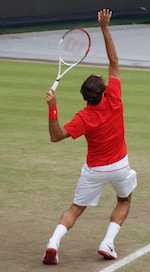 Early in my career I knew a little bit and was effective because I was always asking annoying questions to fill in the gaps in my knowledge. In the middle, I thought I knew a fair bit but was often reluctant to share what I did know. The problem then was that I knew enough to realize how much there was to know and knew there was always an expert somewhere who knew more than I did.
Early in my career I knew a little bit and was effective because I was always asking annoying questions to fill in the gaps in my knowledge. In the middle, I thought I knew a fair bit but was often reluctant to share what I did know. The problem then was that I knew enough to realize how much there was to know and knew there was always an expert somewhere who knew more than I did. “Standby Cue 103.â€
“Standby Cue 103.â€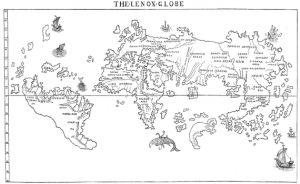 I’ve made the claim that the
I’ve made the claim that the  “We need you back in the office now, Anthony’s team just got fired.â€
“We need you back in the office now, Anthony’s team just got fired.â€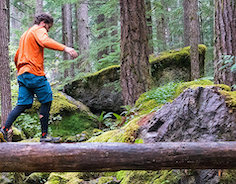 Spinning a new consulting firm out of older, bigger, ones is a common story—no different from the founding of a new religious sect in a schism with the past. A charismatic leader and a few faithful followers declare a new revelation and start preaching from a new street corner.
Spinning a new consulting firm out of older, bigger, ones is a common story—no different from the founding of a new religious sect in a schism with the past. A charismatic leader and a few faithful followers declare a new revelation and start preaching from a new street corner.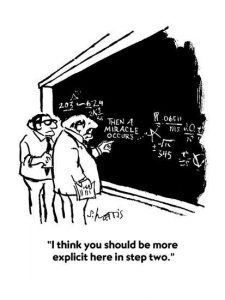 A number of years back my thesis advisor retired and I made the trip to Boston to join in the celebration. One of the observations that has stuck with me was that the curtain was going up on Act 3 of my advisor’s career.
A number of years back my thesis advisor retired and I made the trip to Boston to join in the celebration. One of the observations that has stuck with me was that the curtain was going up on Act 3 of my advisor’s career. We think of learning relative to a body of knowledge; we talk about learning a foreign language, data science, corporate finance, or carpentry. Academic degrees are built around demonstrating mastery of a body of knowledge.Professions are defined and certified in terms of mastering a specified body of knowledge.
We think of learning relative to a body of knowledge; we talk about learning a foreign language, data science, corporate finance, or carpentry. Academic degrees are built around demonstrating mastery of a body of knowledge.Professions are defined and certified in terms of mastering a specified body of knowledge.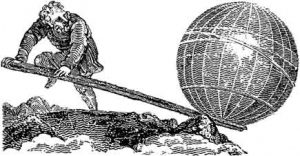 “Give me a lever long enough and a place to stand and I will move the Earth†doesn’t work if you are standing in the wrong place.
“Give me a lever long enough and a place to stand and I will move the Earth†doesn’t work if you are standing in the wrong place.